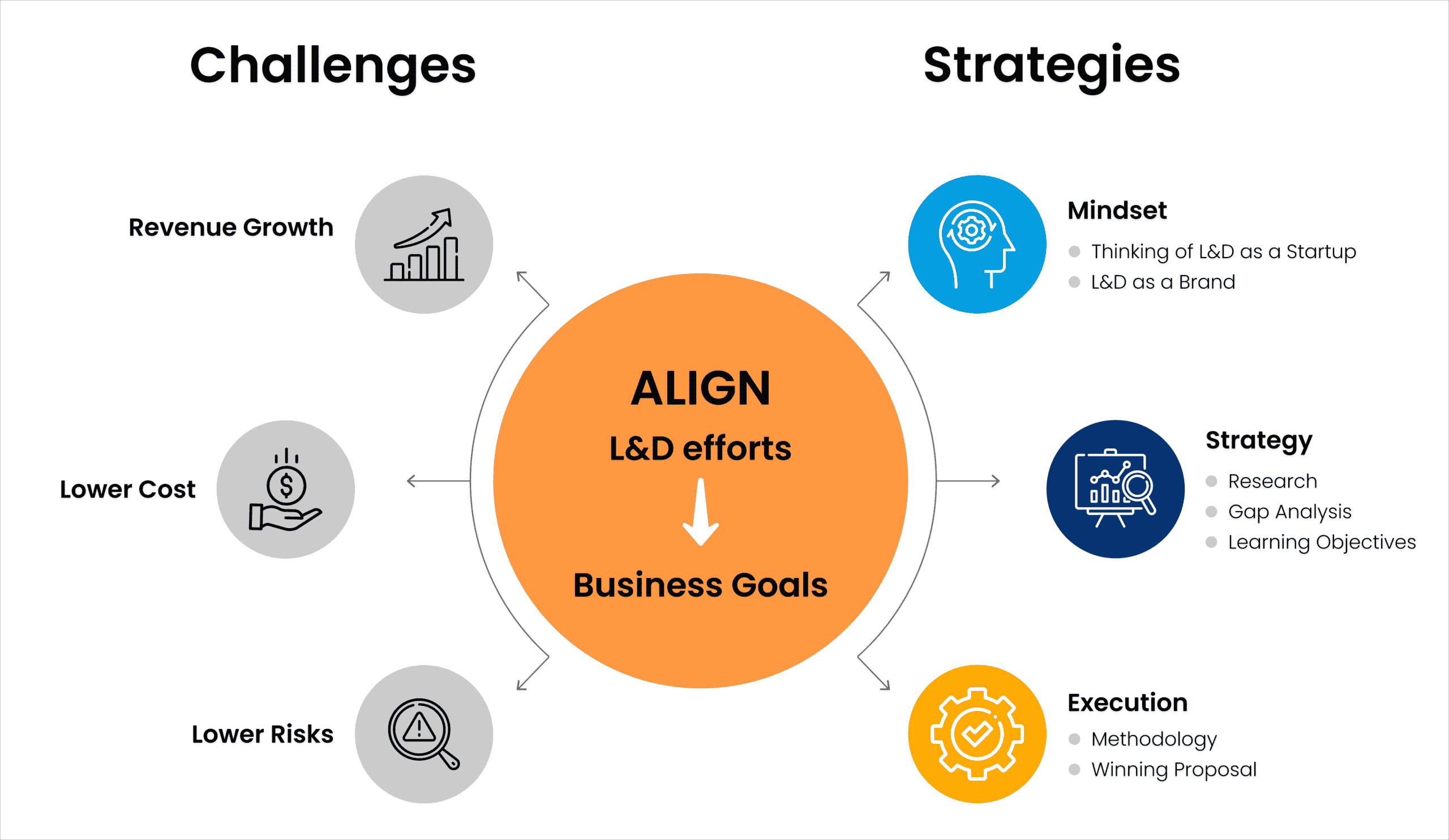Businesses usually fail to understand how effective training efforts can aid in the accomplishment of their corporate objectives. Every organization’s Learning and development(L&D) department is responsible for strategizing excellent training methods aligned with business initiatives to make their people competent enough in the ever-growing environment.
Businesses must understand that people and organizations are two sides of the same coin. When employees are trained to have skills and knowledge that accelerate transformation it makes a great impact on achieving organizational goals faster. The greater business context should guide and motivate L&D’s training efforts and help training managers and instructional designers align their work towards achieving higher goals.
Core capabilities can be developed using well-planned continuous training methods like upskilling, cross-skilling, and reskilling to cater to the needs. It adds to the efficacy of the performance in every department. In addition, it also makes your employees compliant with the most recent technology and behavior.


















